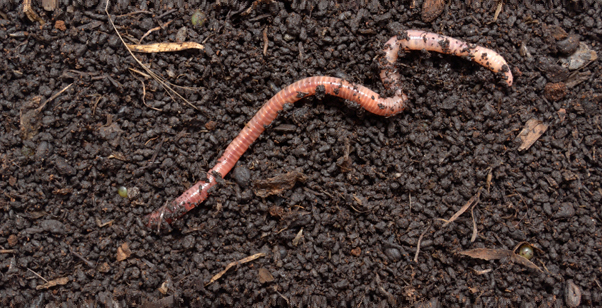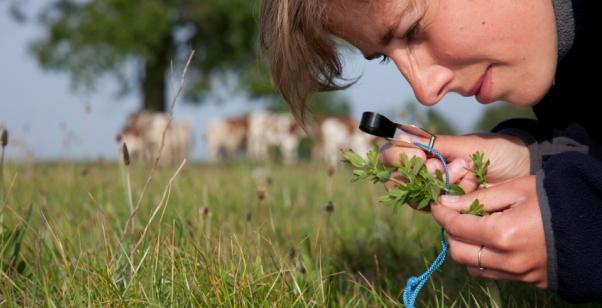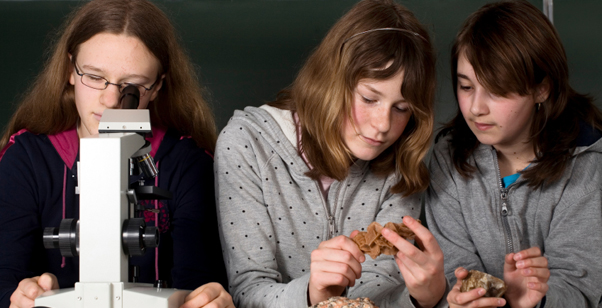Evaluating methods of pest control
Demonstration
Results are reported here to analyse and evaluate. This is not an experiment to repeat. This investigation allows discussion of the economic importance of pest control as well as raising wider issues. It shows that scientific research is of importance worldwide.
Lesson organisation
Copy the student sheet ![]() Evaluating methods of pest control (112 KB) and discuss the data and questions. If your students have access to spreadsheet software, you could provide the data as a spreadsheet and ask them to produce graphs using the software. Alternatively, you could present the
Evaluating methods of pest control (112 KB) and discuss the data and questions. If your students have access to spreadsheet software, you could provide the data as a spreadsheet and ask them to produce graphs using the software. Alternatively, you could present the ![]() main pest control data set (24 KB) to the whole class and discuss the best way to produce a graph, then demonstrate how to use the software to do so.
main pest control data set (24 KB) to the whole class and discuss the best way to produce a graph, then demonstrate how to use the software to do so.
Apparatus and Chemicals
For the class – set up by technician/ teacher:
Copies of the student sheet
Sample of okra, if available
Health & Safety and Technical notes
Ethical issues
There are no ethical issues associated with running this activity. However, the discussion might raise issues related to ethical practice in scientific research, to the application of the results of scientific research and to the presentation of scientific data by groups with different vested interests.
Procedure
SAFETY: There are no safety issues with this protocol.
Preparation
a Copy the student sheets and prepare the table of data in suitable software.
Investigation
b Present the data in a form that makes it easier to analyse.
c Discuss the results of the investigation and their consequences.
Teaching notes
Consumers are increasingly worried about pesticide residues in crops. This means that crops produced without pesticides could be sold at a premium and may be more profitable for some producers. However, many people assume that organic farming involves no pesticides or other chemicals, which is not the case. In the UK, the Soil Association mark of approval indicates that only chemicals approved by the Soil Association have been used. These chemicals include some traditional pesticides and fungicides - such as copper ions in solution, pyrethrum and derris. It is important to know exactly what 'organic' status means before drawing conclusions about risks and benefits.
It is also debatable whether our personal assessments of pesticide risk are accurate, and whether we can assess that risk reliably when compared with other risks. It may also be interesting to discuss with students whether it is reasonable to try to eliminate risks completely from our daily life.
It is worth considering whose views on pesticide safety we should accept and why. Government bodies such as the Pesticide Residue Committee are responsible for monitoring, reporting and advising on pesticides in food. Their test results find detectable levels of pesticide in many foods, but they are confident that those levels are not harmful to humans.
Recognition of ‘organic’ status by the Soil Association is important to many farmers in the UK. The Soil Association website presents information about the harm that pesticides can cause to farm-workers in direct contact with the concentrated chemical, and claims that some risks to human health are unknown. It argues that avoiding pesticides avoids risk – presented as a point in favour of organic food production.
The Pesticide Residue Committee website stated in September 2009 that the results from its most recent surveys of residues in food and drink 'provide evidence as to the absence of residues in about 70% of tested produce. In almost 30% of samples, residues were below the statutory limits (Maximum Residue Level) which poses no safety concerns for consumers. The Department of Health recommends an intake of at least five portions of fruit or vegetables per person per day to reduce the risk of cancer, heart disease and many other chronic conditions. The positive effects of eating fresh fruit and vegetables as part of a balanced, healthy diet are well proven and far outweigh any concern about pesticide residues.'
Whose information about pesticide residues and safety is most reliable?
The student sheet presents research in Thailand about okra, the effects on okra of the cotton bollworm, and the effectof treatment with a virus that attacks the bollworm.
The graphs show that the numbers of larvae start to fall on the 'virus-treated' plot soon after spraying starts. However, the number of eggs is similar to that on the insecticide plot until day 25. This suggests that the virus does not infect the adults, or the eggs. However, once it infects the larvae, they die before becoming egg-laying adults and so after a time, this leads to a fall in the number of eggs.
The graphs also suggest a link between the number of larvae and the number of damaged pods. On day 34 and day 55 in the insecticide plot, there are peaks in the number of larvae and the number of damaged pods.
In this trial, the virus looks effective in managing damage to okra from the cotton bollworm. Before recommending spraying with virus there is more work for scientists to do. A 4-month survey of one acre in one year is not enough information on which to base a nation’s agricultural decisions. Future questions to consider are:
- What are the longer-term effects of spraying?
- The bollworm was becoming resistant to pesticide; could it also gain resistance to the virus?
- Are other living things affected by the virus?
- What is the increase in quantity and quality (and hence value) of the crop? Does this increase in value justify an increase in cost of pest treatment?
Health & Safety checked, September 2009
Downloads
Download the student sheet ![]() Evaluating methods of pest control (112 KB) with questions and answers.
Evaluating methods of pest control (112 KB) with questions and answers.
Download ![]() the main data set (24 KB).
the main data set (24 KB).
Web links
www.food.gov.uk/safereating/chemsafe/pesticides/pesticidesmainqa/#h_407608
The Food Standards Agency FAQ section on pesticides in food. It states how food is tested to monitor pesticide residues and explains some of the issues.
www.pesticides.gov.uk/prc_home.asp
The Pesticides Residue Committee website is a useful source of information for any student (or teacher) really keen to find out more about pesticide residues in food.
www.soilassociation.org
The Soil Association website states that it 'promotes planet-friendly food and farming through education, campaigns and community programmes'. (See the teachers notes above for comment on the use of chemicals in organic farming.)
http://understandinguncertainty.org/
2845 ways to spin the risk allows you to choose different ways to present the risk to health of eating bacon and so helps you to decide what decision to make about bacon in your life.
(Websites accessed October 2011)


